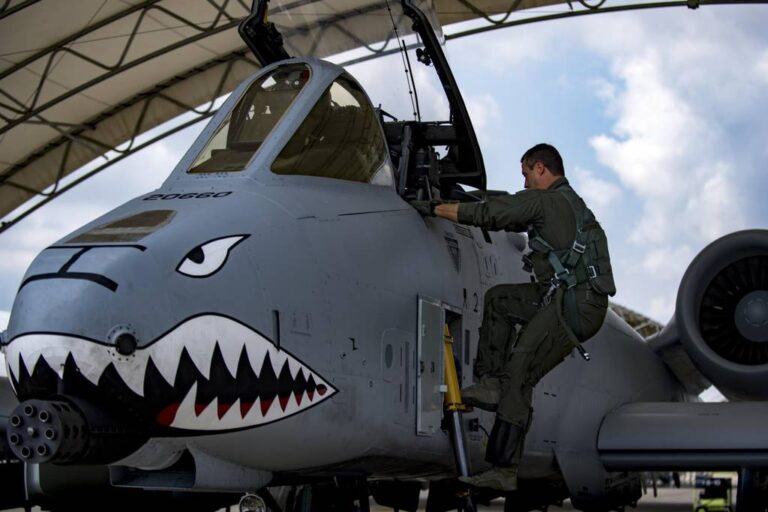
WASHINGTON — The Air Force would be allowed to retire 42 A-10 Warthog attack planes in 2024 as part of a proposed version of the House’s fiscal 2024 National Defense Authorization Act.
Advertisement
But if the bill, HR 2670, becomes law, the Air Force wouldn’t be able to cut any more until it shows lawmakers a plan on how it would conduct close air support missions.
This proposal, included in a draft of the NDAA released Monday by the House Armed Services Committee’s tactical air and land forces panel, would leave the service with 218 A-10s. This would fully grant the request the Air Force made in its FY24 budget proposal in March.
For years, lawmakers and the Air Force butted heads over the fate of the A-10. The service repeatedly argued the rugged attack plane — frequently called upon for close air support missions in Iraq and Afghanistan during the wars there — would be too vulnerable to survive in a high-end fight. The Air Force repeatedly asked Congress to allow it to start retiring A-10s, arguing airmen and resources used to keep those planes flying would be better used on newer, more survivable aircraft.
But lawmakers always rejected the Air Force’s request — until last year, when Congress agreed to allow the service to start retiring the first 21 A-10s in 2023. The House’s latest proposal suggests that retirement effort will continue.
Advertisement
This proposed NDAA would also put conditions in place before the Air Force can cut A-10s beyond the 218 count. Under the bill, the service would have to send lawmakers a plan for conducting close air support missions, as well as airborne forward air controller and combat search and rescue missions, including spelling out how many units and aircrews would be needed to conduct those missions. Further A-10 cuts could then come six months later.
The NDAA would also grant the Air Force’s request to retire 57 F-15C and F-15D fighters, some of which are four decades old and reaching the end of their lives.
But lawmakers want to see more information from the Air Force and Navy on their own Next Generation Air Dominance and drone wingman programs.
The proposed language would require the services to send progress reports on the development and technology maturation of these programs. This would include price tags, such as how much an individual aircraft would cost to fly per year and per flight hour.
And the proposed bill would set limits on how much the services could spend on each category of drone wingmen aircraft.
Advertisement
The bill’s proposed language would also require the Pentagon to declare the F-35 Joint Strike Fighter program’s development of software for its Block 4 modernization effort, called Continuous Capability Development and Delivery, as a major subprogram of the fighter’s acquisition program. It would also require the F-35′s program executive officer to designate and build six F-35s to serve as developmental testing and evaluation aircraft to support the program’s future testing.
Stephen Losey is the air warfare reporter for Defense News. He previously covered leadership and personnel issues at Air Force Times, and the Pentagon, special operations and air warfare at Military.com. He has traveled to the Middle East to cover U.S. Air Force operations.